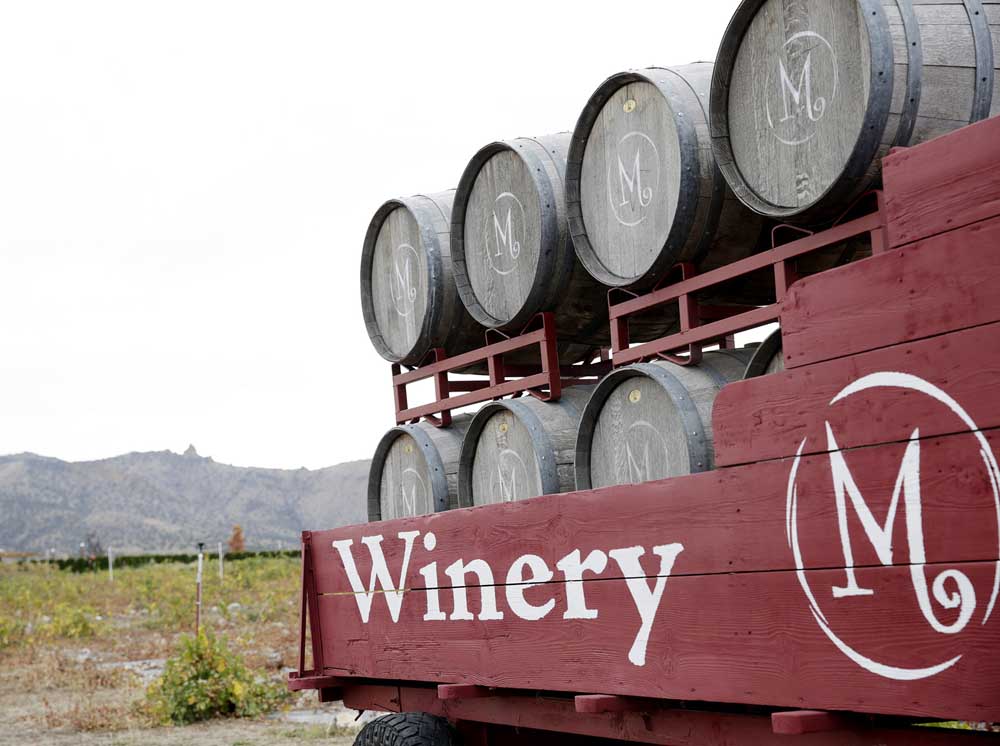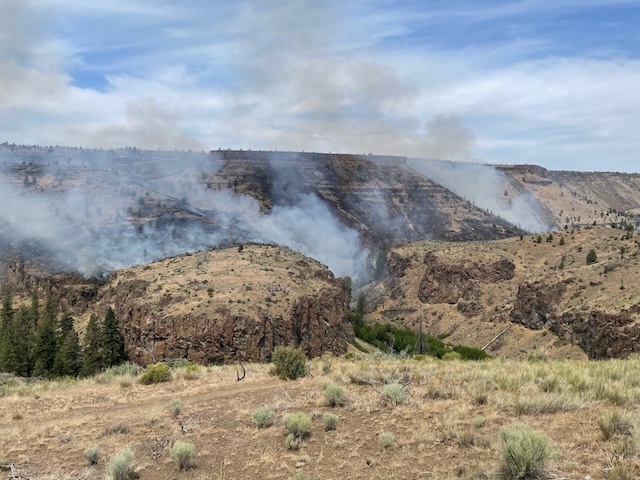Central Oregon wineries bear fruit
Published 12:00 am Sunday, October 19, 2014

- Meg Roussos / The BulletinMaragas Winery, about 5 miles north of Monkey Face Vineyard, pioneered wine making in the High Desert.
TERREBONNE —
As Doug Maragas shoveled out the last of the fermented grapes from a one-ton bin, the smell of fresh red wine wafted through the crisp fall air at Maragas Winery.
“Boy, that smells good,” Maragas said, as he watched fermented grape juice trickle through his wine press and into an 80-gallon trough.
Subzero temperatures took a toll on Maragas’ vineyard in December, destroying 90 percent of his newly planted 19 acres of vines. But a warm summer and fall yielded a record harvest that is giving the winemaker security for the future.
“Fall has been a harvester’s paradise,” he said. “We’ve never harvested so much in such a short period of time.”
Maragas started his harvest Sept. 11 and finished Oct. 3 with three tons of grapes, an additional ton over last year, from his vineyard about 3½ miles north of Terrebonne.
Wineries throughout the state are expecting banner harvests because of warmer evening temperatures that reduced vine stress, said Michelle Kaufmann, assistant communications manager for the Oregon Wine Board.
“It’s been a record year for heat units, not in daytime highs, but overnight lows were much higher than they normally are,” she said.
The Oregon wine grape and wine industry generates more than $2.7 billion in economic activity each year, according to the Oregon Wine Board. The state had 605 wineries and 951 vineyards in 2013, continuing a steady growth trend since 2011, according to data from the Southern Oregon University Research Center. Central Oregon has an emerging wine industry with three wineries licensed to make wine — Maragas, Volcano Vineyards and Faith, Hope and Charity — as well as half a dozen vineyards and several tasting rooms.
Kerry Damon, the vineyard manager of Monkey Face Vineyard at Ranch at the Canyons, a gated community near Terrebonne, said he expects a 9-ton harvest, the 8-year-old vineyard’s largest.
On Oct. 9, a group of ranch staff, homeowners from within Ranch at the Canyons, as well as members of the Central Oregon Wine Growers Association, picked the final 3.5 tons of grapes at Monkey Face.
Each cluster of grapes is cut from the vine individually by hand and placed into totes, Damon said. When the totes are full, they are dumped into half-ton bins that will be transported to Pallet Wine Co. in Medford to be fermented and bottled.
“It will be the best harvest ever to come out of Ranch at the Canyons,” Damon said. “The vines are starting to hit that mature level. We should start seeing much more production from here on out.”
Ranch at the Canyons plans to sell the wine under the Monkey Face label. White wines are expected to be available in fall 2015, and reds in February 2016.
Cindy Grossmann, co-owner of Faith, Hope and Charity Vineyards & Events Center west of Terrebonne, said her vineyard produced fruit, but there was no harvest.
“Our vineyard manager decided early on that we needed to take all the grapes,” she said. “He wanted one more year to strengthen the vines so we removed the grapes early on.”
The vineyard was planted in 2010. Typically, it takes a couple years before a vineyard is ready to produce usable fruit. Grossman expects to have her first harvest at Faith, Hope and Charity next year.
While several local vineyards produce grapes, Maragas said he has the only wine production facility in the region, and Maragas is the only one producing a wine from grapes owned and grown on the winery’s property.
After harvesting his grapes, Maragas destems and places them in fermentation tanks for about two weeks. Then, they are put into a press that separates the liquid from the solid pieces of grape and squeezes out the juice.
“There’s a stainless steel slotted screen all the way around the cylinder,” Maragas said. “There’s a bladder that inflates inside the cylinder and it’s going to push the juice through there and it’s going to fall into a trough below and that’s going to get pumped into the barrels.”
On Monday, he pressed four tons of Tempranillo grapes he harvested from the Applegate Valley region in Southern Oregon. Those grapes will bring the total fermenting at his winery to 28 tons, which will create about 2,000 cases of wine that will be ready in one to five years.
“Tenacity is the name of the game. You’re going to have that with farming and agriculture. You’re going to have these moments where it’s extremely risky,” he said. “You have to have thick skin. … You don’t always get what you want and you have to make it through the tougher times.”
But other years, he said, result in amazing vintages, which is the payoff for making it through the more difficult times.
“That’s really the core of the industry,” he said. “That’s why we have great vintages, and others that aren’t so significant. That becomes the challenge of the winemaker, to bring those vintages that may be lacking from harvest and bring them to the point where they become something remarkable.”
— Reporter: 541-617-7818,
rrees@bendbulletin.com






